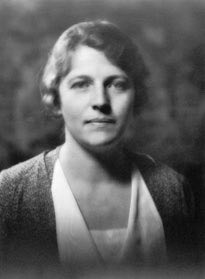Pearl Sydenstricker was the child of American missionaries. She grew up in China and was always “mentally bifocal”, as she put it. Becoming a writer at an early age, she married John Buck, an American agricultural expert in China, and bore a daughter. Her family was caught up in the turmoil of modern China, and in 1927 she narrowly escaped with her life from an angry mob, leaving behind an early manuscript.
Her novel, The Good Earth (1931), rocketed her from obscurity to international fame. The Good Earth headed the best seller list for months, sold nearly two million copies, and was translated into thirty languages. It inspired a Broadway play and a Hollywood film, and was awarded the Pulitzer Prize. In 1938, having published several other novels, she won the Nobel Prize in literature.
Pearl Buck continued to be a remarkably productive writer. A born storyteller, she took plot and character ideas from two different cultures, and her writings shone with universal human appeal. Her over seventy books always sold well. She wrote a book about her father, her mother, and even, courageously, about her daughter’s disability. Late in life she turned more to philanthropy, especially to the cause of East-West understanding.

